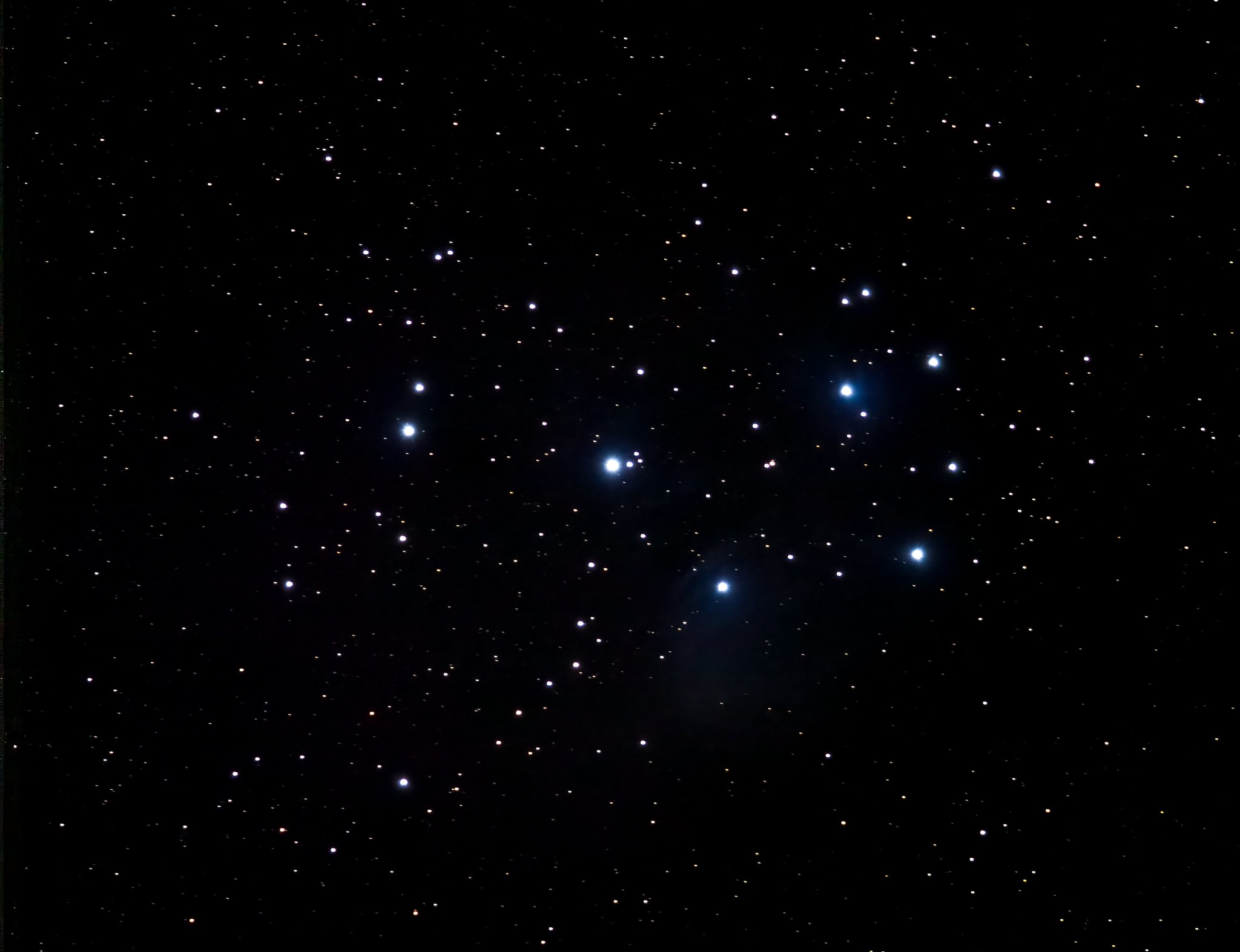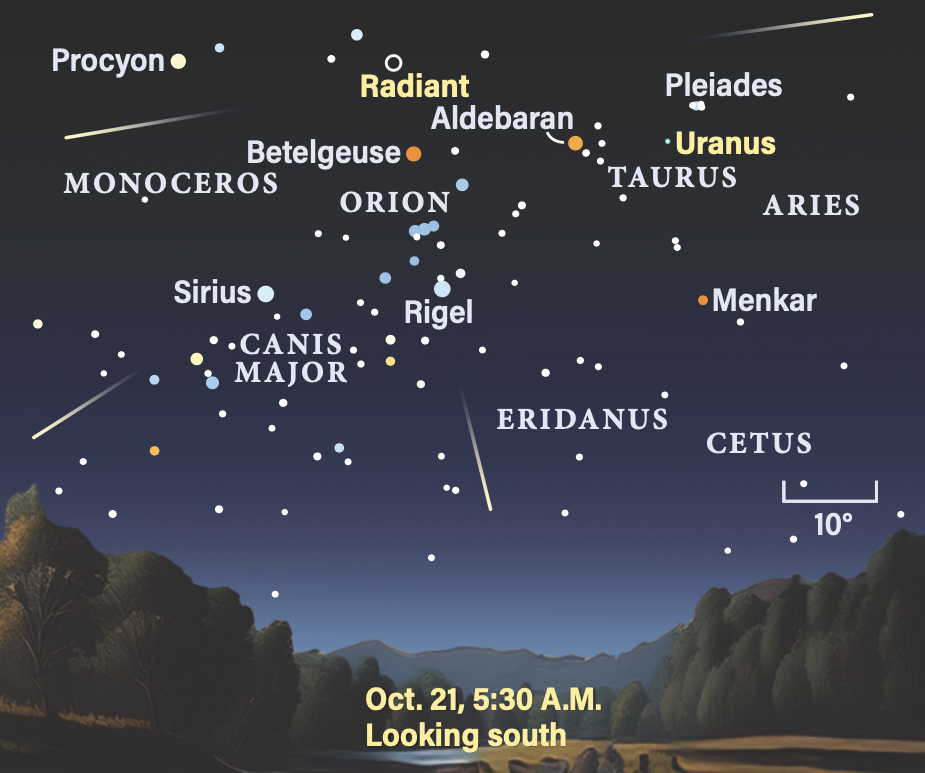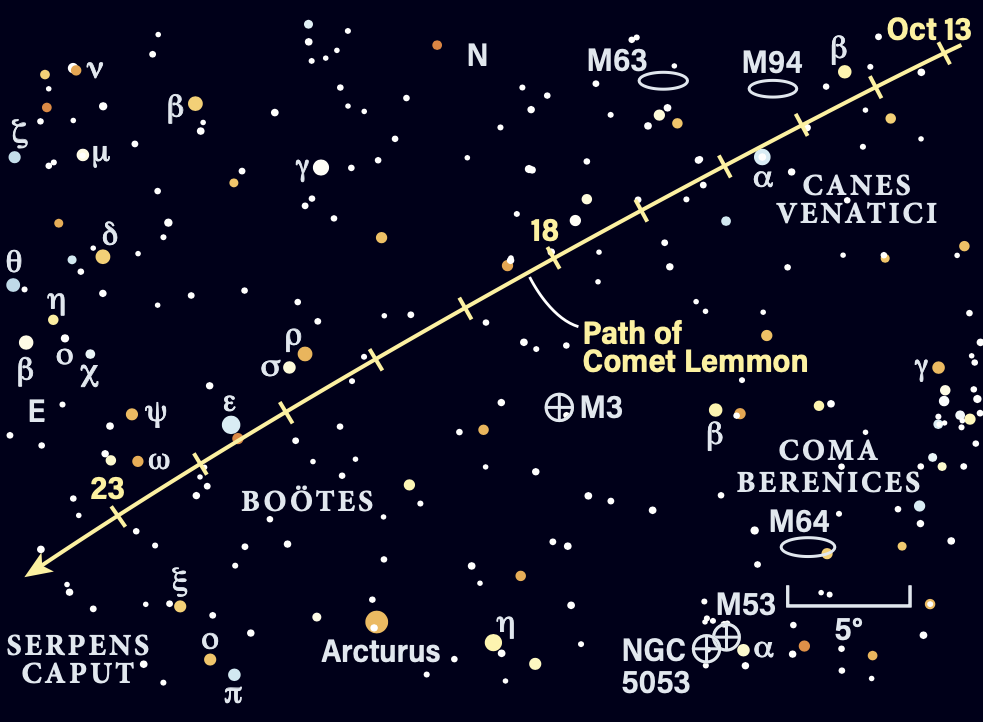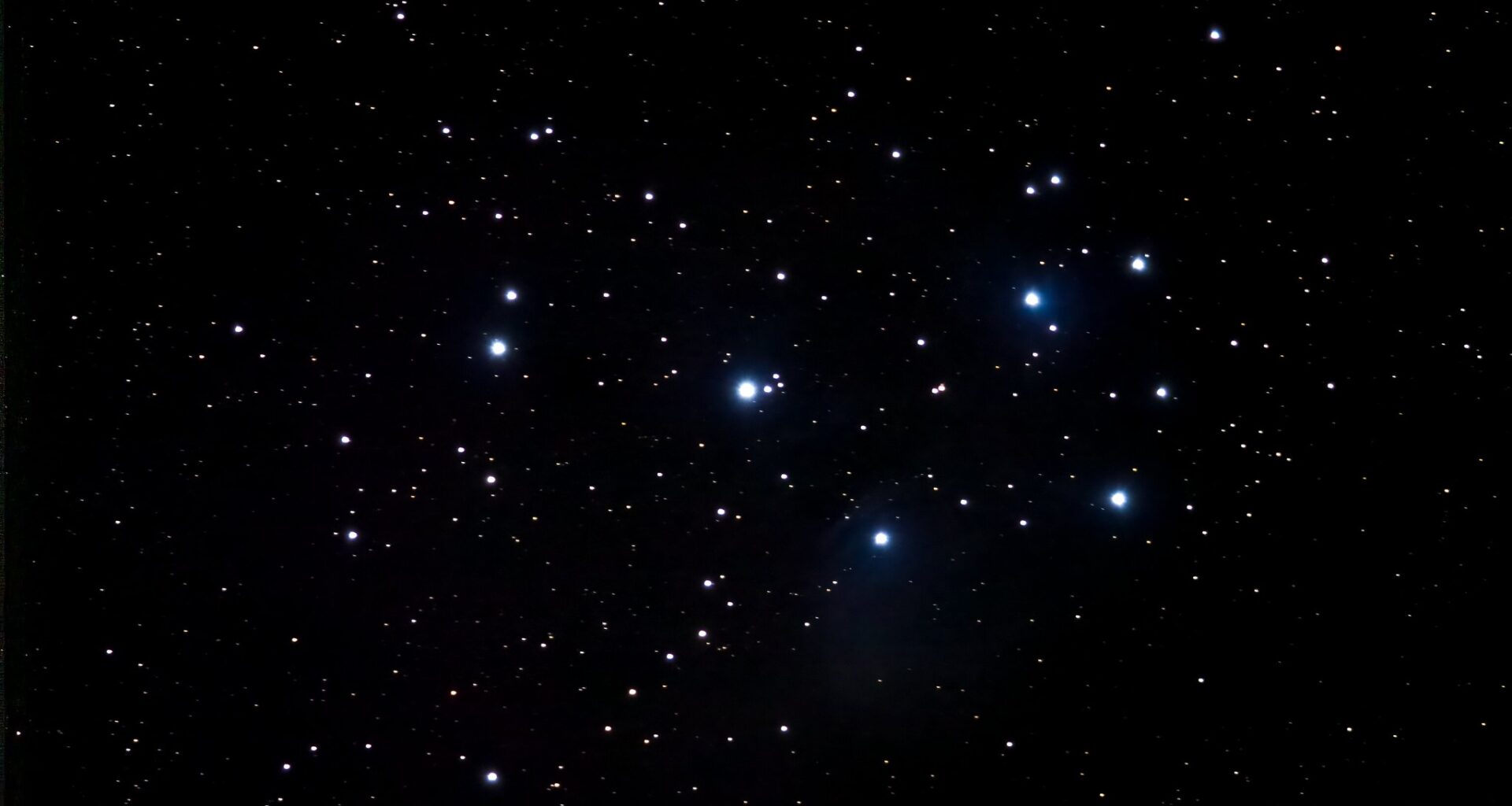Back to Article List
One of the most famous clusters in the sky, the Pleiades leads the figure of Taurus the Bull above the horizon on autumn evenings.

The young stars of the Pleiades shine blue-white; many observers think the brighter components make the shape of a small dipper. Credit: Kevin Gill (Flickr, CC BY 2.0)
- The Pleiades (M45), a 100-million-year-old open cluster containing approximately 500 stars located 380 light-years from Earth, is observable high in the east by 10 P.M. local daylight time. Concurrently, Uranus, a magnitude 5.6 ice giant, is positioned south of the Pleiades and is best viewed with optical aid.
- On October 19, the Moon and Venus will be visible before dawn.
- October 21 marks the peak of the Orionid meteor shower, expected to yield approximately 20 meteors per hour, with its radiant highest around 5:30 A.M. local daylight time in the constellation Orion; concurrently, the Moon reaches its New phase at 8:25 A.M. EDT.
- Also on October 21, Comet C/2025 A6 (Lemmon) will make its closest approach to Earth at 28.6 million miles (46 million kilometers), appearing at 5th magnitude and visible with optical aid in Boötes approximately 4° above the northeastern horizon by 6 A.M. local daylight time.
Looking for a sky event this week? Check out our full Sky This Week column.
October 19: The Moon and Venus before dawn
By 10 P.M. local daylight time, the Pleiades (M45) is already 30° high in the east. This lovely naked-eye cluster is well known across the world, sparkling in northwestern Taurus. Several of its stars are visible without optical aid — most observers can see five to seven individual stars in the shape of a tiny dipper (although don’t confuse this with the much larger Little Dipper in the north).
Through binoculars or a low-power telescope view (try your finder scope), many more stars begin to appear. The Pleiades stretches about 110’ on the sky — about the width of three and a half Full Moons — and contains some 500 stars, although only about 100 or so are visible under lower magnifications. This open cluster is roughly 100 million years old and is about 380 light-years from Earth.
Currently located south of the Pleiades is the ice giant Uranus. Glowing at magnitude 5.6, the planet is best seen in binoculars or a telescope. From magnitude 2.9 Alcyone (Eta [η] Tauri), simply drop 4.3° south-southeast to land on Uranus. Appearing as a “flat”, grayish star in your optics, the planet’s disk is some 4” wide.
Sunrise: 7:16 A.M.
Sunset: 6:12 P.M.
Moonrise: 6:27 A.M.
Moonset: 5:38 P.M.
Moon Phase: New
*Times for sunrise, sunset, moonrise, and moonset are given in local time from 40° N 90° W. The Moon’s illumination is given at 10 P.M. local time from the same location.
Tomorrow, October 21, is a big day! Before dawn, the Orionid meteor shower peaks as the Moon reaches New phase at 8:25 A.M. EDT. Additionally, Comet C/2025 A6 (Lemmon) passes closest to Earth today, skimming some 28.6 million miles (46 million kilometers) from our planet.

The Orionids’ radiant is highest early in the morning. Uranus may be visible to sharp-eyed observers without optical aid. Credit: Astronomy: Roen Kelly
The Orionids are best viewed in the early-morning hours before sunrise. The shower’s radiant, the point from which its meteors appear to emanate, is highest in the sky around 5:30 A.M. local daylight time. Step outside and look south to locate the constellation Orion; the radiant is just above the Hunter’s red giant shoulder, Betelgeuse.
Now, scan the sky to either side of this point — meteors will have the longest trains about 40° away from the radiant. Some 20 meteors per hour are expected this morning, so it’s worth taking a look.
If you’ve also got a clear northeastern horizon, Comet Lemmon is some 4° high by 6 A.M. local daylight time. The comet is now 5th magnitude, readily visible through binoculars, a telescope, and in smartphone images. It’s roughly even in altitude with blazing Venus, visible in Virgo, but Lemmon lies in Boötes, nearly 40° northeast of the planet. This morning the comet is only 1.7° from magnitude 3.6 Rho (ρ) Boötis. Lemmon is rising but the sky will quickly start growing brighter as sunrise approaches.

This chart shows the path of Comet Lemmon from Oct. 13 to 23. Note that only deep-sky objects 8th magnitude or brighter are shown. Credit: Astronomy: Roen Kelly
